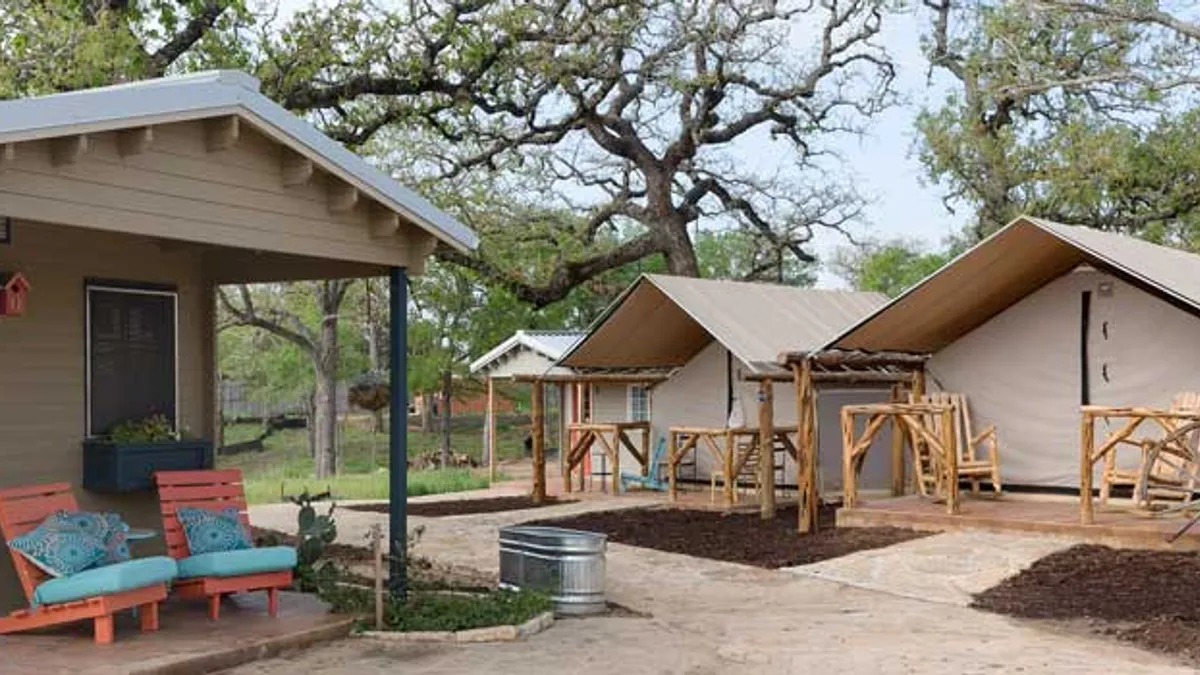Dive Brief:
- San Jose, CA has approved a one-year pilot program to build 40 tiny homes that will house the homeless, according to The Mercury News and others.
- City leaders are expected to name three potential sites for the village next month. Their long-term goal is to have a tiny house village in each of the city's 10 districts.
- San Jose has earmarked about $2.4 million for the project, but that's not enough to cover it with the current tiny house design. The homes will cost more than $73,000 each, for a total of more than $2.9 million.
Dive Insight:
The tiny home village has been quite contentious for San Jose and reportedly led to a heated debate during last week's city council meeting. The two council members who opposed the measure say it is too expensive, especially for the small number of people it will help, and that the village would take too long to build. They presented the alternative of the city leasing apartments that would be used to house people experiencing homelessness, which would eliminate development costs. That's an idea proposed this year by the mayor of Washington, DC and in practice in New York, where Mayor Bill de Blasio is working to do away with that method.
A major problem with the lease proposal is that San Jose is already strapped for housing, particularly affordable housing. It has 1 million residents and about 4,300 homeless, according to the city's 2017 homeless census. Trying to find existing housing for that many people at once is a challenge, especially housing that won't break the bank for the city. San Jose is 50 miles from San Francisco and has similar sky-high rents and low vacancy rates.
Some residents have also been vocal about voicing their opposition to the tiny house villages. Complaints ranged from concerns about safety to blight to sanitation to lower property values. But San Jose Mayor Sam Liccardo said the debate isn't about whether or not to let the homeless into neighborhoods because they're already there, it's just a matter of housing them.
Although the city council ended up passing the measure, it did come with caveats. The tiny houses must be at least 1,320 feet away from schools and 530 feet away from traditional homes. While that creates a buffer for concerned homeowners in whichever neighborhood is chosen for the establishment, some worry it also isolates the village inhabitants from the rest of society and creates a stigma for living there.
Even with the restrictions, the tiny houses offer people experiencing homelessness a sense of autonomy. Although tiny homes are typically extremely small — sometimes only 50 square feet — the residents have their own space with a door, instead of having to live in communal shelters, which can be crowded, noisy and have no privacy.
Tiny house villages are one of the numerous holistic approaches to combating homelessness that cities have been taking on in recent years. Communities like this are in place in all parts of the country, from Austin to Detroit to Syracuse, NY. They have been considered successful in many instances for breaking cycles of chronic homelessness by getting to the root of problem and providing long-term solutions.












